Spicy secrets of one of the world’s most delicious destinations
I meet Beh on a side street of Penang, where he stands next to a narrow stall in front of an open garage. With combed, wispy grey hair, tanned skin and a loosely buttoned shirt, he hands me a half-cut piece of pale-yellow fruit, roughly the size of an apricot. “Peel,” he says with an encouraging nod, pointing to the crimson-red stone inside. I carefully peel off a ribbon of the slightly rubbery, web-like membrane, the mace, to reveal a fresh nutmeg kernel – something I usually only see packaged in the supermarket.
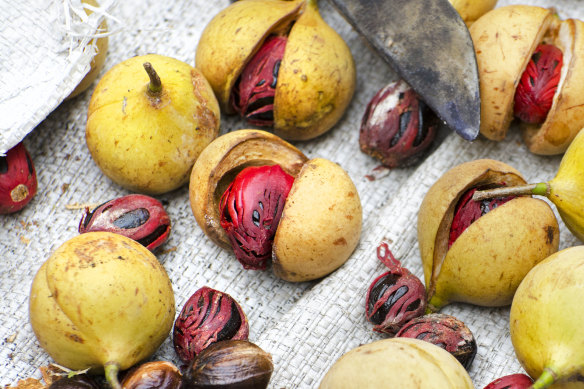
The nutmeg seed is wrapped in a crimson membrane.Credit: Getty Images
Beh’s simple roadside stand is lined with various nutmeg products, including pickled fruit, nutmeg oil (good for arthritis, I’m told), nutmeg balm (a headache reliever), and sweet yet slightly tart nutmeg juice, which is said to be a natural mood booster and hits the spot on a humid day.
The nutmeg used to make Beh’s products comes from the north of Penang Island, where I’ve travelled to visit the Tropical Spice Garden – an impressive showcase of 500 plant species from around the world on the site of an abandoned rubber plantation.
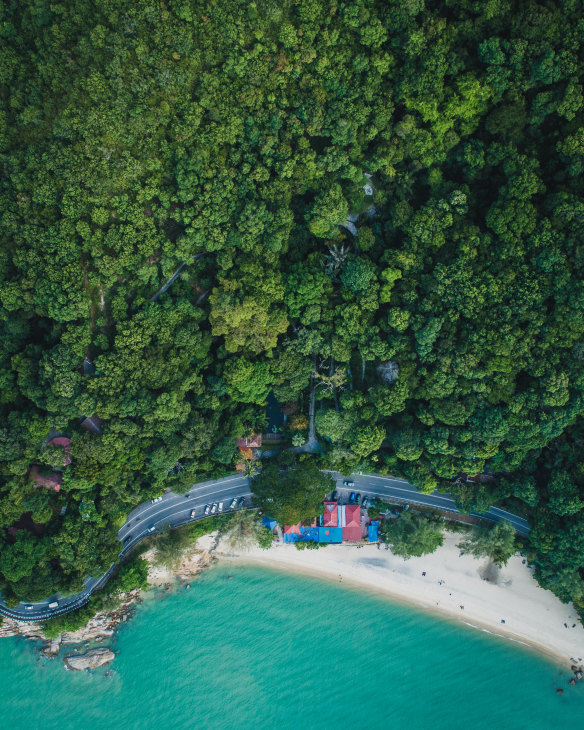
The two-hectare tropical garden oasis faces a picturesque white-sand beach.Credit: Penang Global Tourism
The “spice trail” is the most popular track in the garden, showcasing how spices synonymous with Malaysian cuisine – like clove, ginger, turmeric and nutmeg – look in their natural form.
Our guide, Zaki, leads us around the two-hectare garden, pointing out wild coriander and kaffir lime plants, before stopping at an unassuming cinnamon tree (is that what it looks like?). Though the tree’s bark produces the curled cinnamon stick we know and love, Zaki invites us to pluck a leaf and roll it between our palms to discover the scent, which is similar to the bark.
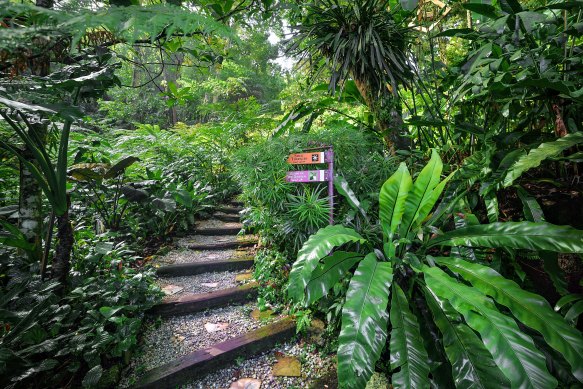
Penang’s spice trail … the most popular track in the garden.Credit: Penang Global Tourism
We learn that the leaf is often used in Malaysian cuisine, and the reason the dry bark became the tree’s pin-up (it was once considered more valuable than gold) was because it could better withstand long seafaring journeys than the delicate leaves.
In a similar vein, nibbling on a clove leaf confirms that clove foliage carries the same spicy, tongue-tingling properties as the plant’s unopened flower buds (the source of the spiky, woody spice we’re most familiar with).
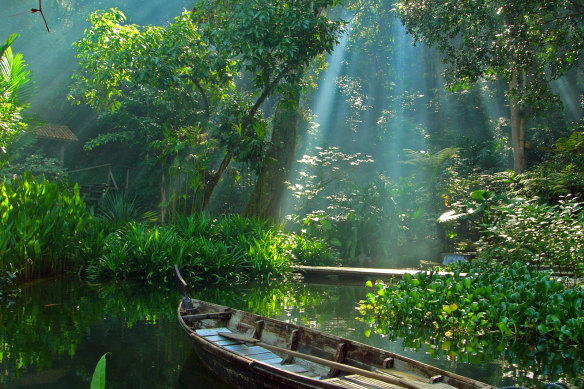
The lush garden features many of the plants that helped put Penang on the map.Credit: Penang Global Tourism
As we browse the lush gardens, with saucer-eyed dusky leaf monkeys swinging overhead, it seems almost absurd that many of these plants helped put Penang on the map and spurred globalisation as we know it today, with the spice trade dating back well before the common era.
Modern-day nonchalance renders most of us incapable of recognising the plant our supermarket spices come from, but if you had a spice plantation during the Renaissance period, you’d be smugger than an early bitcoin adopter circa 2021. Spices were renowned for their medicinal properties (as spruiked by Beh today) and also became status symbols. (Diamond ring? No thanks, just give me a cinnamon stick.)
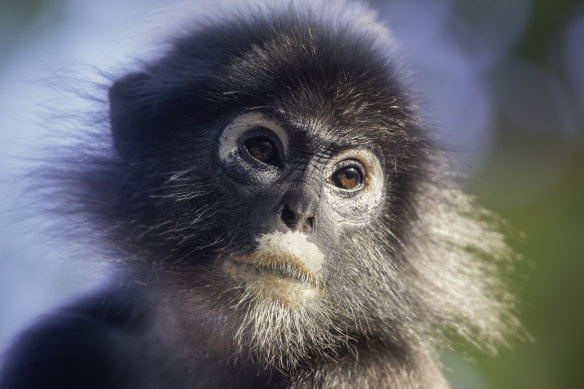
Monkeying around: A dusky leaf monkey, or spectacled langur.Credit: Getty Images
From the 16th century, mace and nutmeg were heavily traded by the Portuguese, then the Dutch – who both had a turn ruling what we now know as Malaysia. In the late 1700s, a representative of the British East India Company, which controlled Penang at the time, was sent to the Moluccas (i.e. the Spice Islands) to collect nutmeg, clove and pepper seeds. These spices were subsequently planted on the island of Penang, where they thrived in the hot, humid climate.
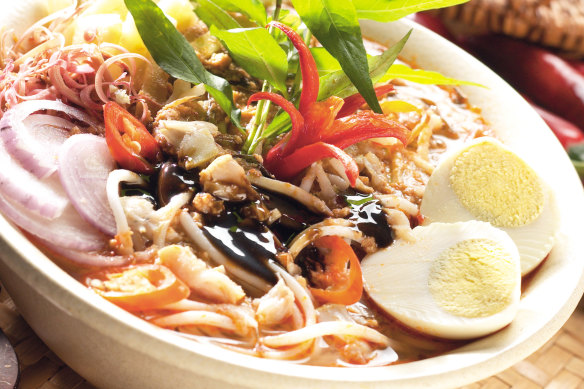
Penang’s sweet and sour asam laksa doesn’t use coconut milk.Credit: Tourism Malaysia
As Penang’s spice trade further developed in the 19th century, locals capitalised on the bags of flavour that were produced in and passed through the state by developing a flavour-packed cuisine (hello, asam laksa).
To heighten my appreciation of the precious plants I’ve become acquainted with and their culinary potential, I join a cooking class at the Tropical Spice Garden, under the tutelage of Malaysian chef Lim Kean Deong.
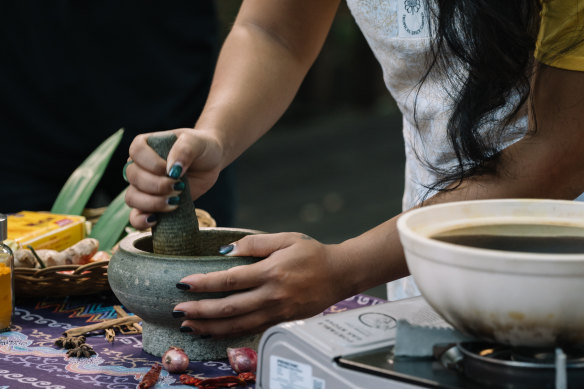
Tropical Spice Garden hosts cooking classes.Credit: Penang Global Tourism
Our class begins with one of the most famous local hawker dishes, char kway teow (fried flat rice noodles). Lim shows us how to pound shallots and garlic into a perfect paste and get our oil-coated wok up to heat (it needs to be piping). I then watch intently as he dollops spoonfuls of oyster, fish, dark and light soy sauces and a sprinkling of white pepper into a small bowl before whisking it into a sweet and smoky sauce that will dress our prawns and noodles. With a side of finger banana fritters and finger-licking chicken wings, marinated in a punchy five-spice powder (ka-ching), we create quite the feast.
Lim places an icy jug of blush-coloured nutmeg juice on our table, where we sit beneath a cool canopy of trees. After pouring a glass each, we clink tumblers; not just to celebrate our kitchen accomplishments, but to recognise the influence of our meal’s shining stars – the humble nutmeg and friends, which helped Penang become the delicious destination it is today.
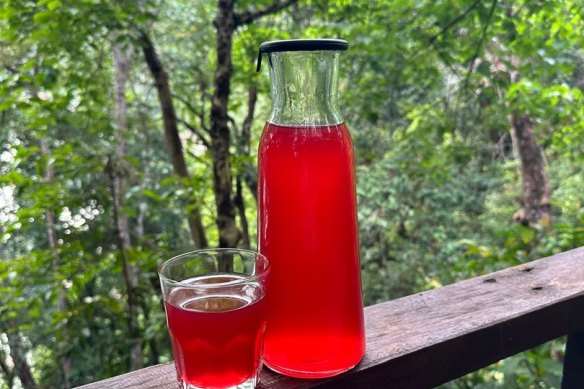
Nutmeg juice … a Penang specialty.Credit: Tropical Spice Garden
The details
Stay
The stately Prestige Hotel embraces Penang’s colonial Victorian heritage and was inspired by the art of illusion used in the 2006 movie The Prestige. Opened in 2019, the luxury hotel is fresh, elegant and conveniently located in the heart of George Town. See theprestige.my
Visit
The writer was a guest of Tropical Spice Garden and The Prestige.
Find great Malaysia holiday deals at myholidaycentre.com.au
Sign up for the Traveller Deals newsletter
Get exclusive travel deals delivered straight to your inbox. Sign up now.